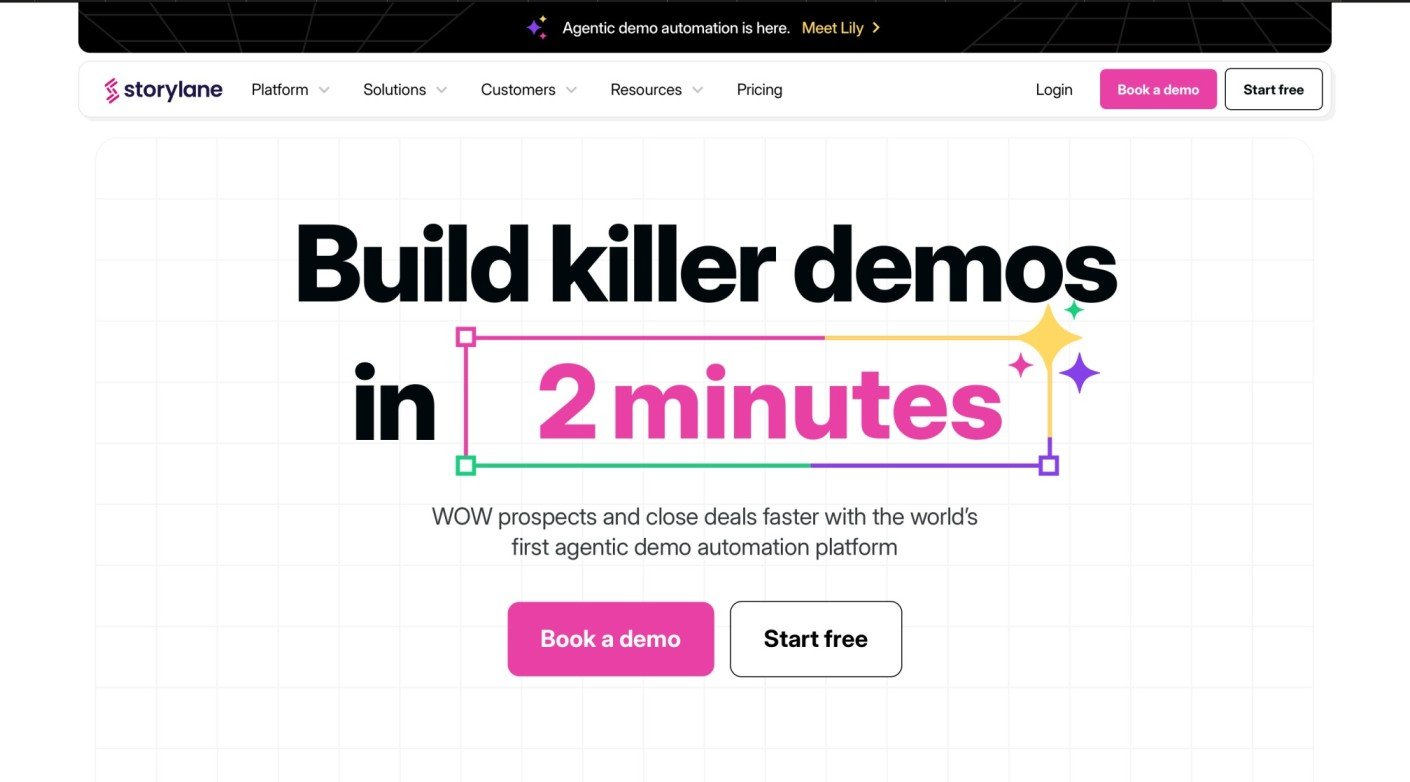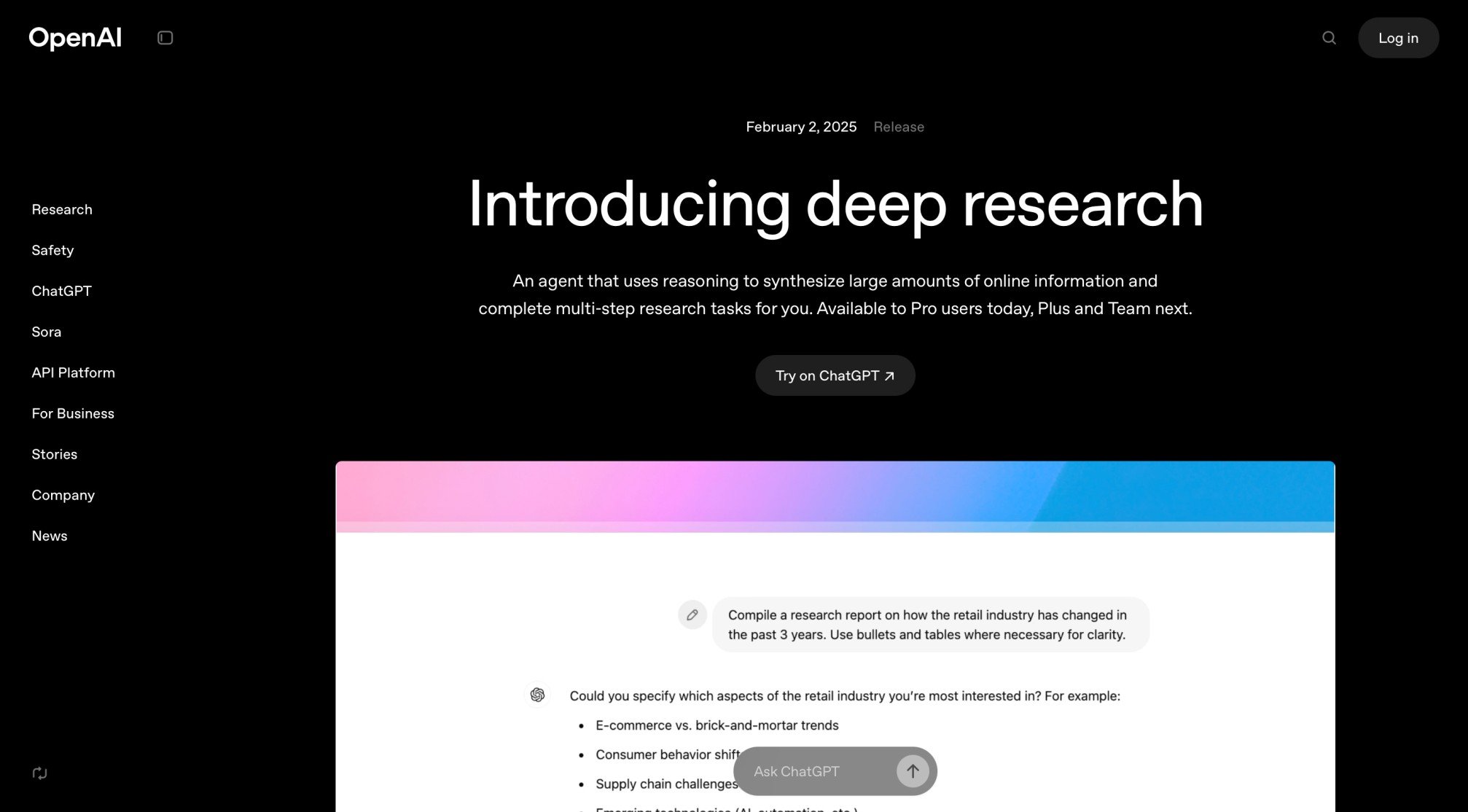Å bygge et produkt er ingen liten bragd. Det krever utallige timer med planlegging, idéutvikling og samarbeid. Deretter kommer revisjonsprosessen, testingen og tilbakemeldingssløyfene, alt før et produkt i det hele tatt når brukernes hender.
Det er der den virkelige utfordringen begynner.
Ifølge Userpilot ser de beste bedriftene at 65 % av brukerne som fullfører viktige handlinger, ser verdien av produktet. Gjennomsnittlige selskaper ser bare at 17 % av brukerne når dette punktet, noe som betyr at de fleste brukerne aldri engasjerer seg fullt ut i produktet deres. Færre brukere av produktet betyr at de går glipp av verdien og sannsynligvis ikke vil fornye abonnementet sitt.
Alle har som mål å bygge et godt produkt med perfekt markedstilpasning, men la oss være ærlige - det tar massevis av tid å forstå brukerne, grave i data og bygge prototyper.
Å forstå potensielle brukere, få dypere innsikt fra kundedata og bygge prototyper tar likevel mer tid enn markedet er villig til å tilby deg.
Noen produkter kommer på markedet med lite brainstorming, mens andre lanseres for sent. Ifølge en rapport fra Undo koster feilsøking av programvarefeil hele 61 milliarder dollar årlig. Det er MILLIARDER med "B". Dette er et bevis på at status quo livssyklusen for produktutvikling ikke holder mål, men med AI i rask utvikling tror jeg dette er i ferd med å bli mer datadrevet, og våger jeg å si ... "mindre smertefullt".
Og her er hvordan.
AI er ikke løsningen i seg selv
Ja, AI kan ikke gjøre alt for deg.

Gif-kilde: Giphy.com
AI-verktøy er der for å hjelpe deg med å bygge bedre funksjoner og produkter raskere, men de kan ikke gjøre hele jobben for deg. Som produktteam bør du evaluere produktutviklingsprosessen din for å se om den er klar for AI. Det innebærer å vurdere den eksisterende infrastrukturen, tilgjengeligheten av kvalitetsdata og teamets tekniske evner.
Å involvere AI gjør ikke prosessen mye annerledes enn en standard prosess. Det er fortsatt viktig å følge standard praksis for produktutvikling og forstå brukerkravene.
AI som strategisk partner gjennom hele produktutviklingens livssyklus
Kalkulatorer erstattet ikke matematikere, og AI vil ikke erstatte teamet ditt. Tenk på AI som den ultimate hjelperen din, som tar seg av de repeterende oppgavene, analyserer enorme datamengder og kommer med forslag, slik at du kan fokusere på det som er viktig: Innovasjon.
Siden 2018 har det vært en økning på 131 % i antall eksperimenter etter hvert som selskaper oppdager at systematisk, AI-forbedret produktutvikling slår meninger i styrerommet hver gang. La oss se nærmere på hvordan kunstig intelligens endrer hver fase av produktutviklingens livssyklus:
1. Idéutvikling og problemdefinisjon
Forestill deg at du prøver å analysere tusenvis av tilbakemeldinger fra kunder. Kunstig intelligens identifiserer øyeblikkelig kritisk innsikt og tilbakevendende problemer, og omsetter dem direkte til strukturerte krav som kan føre til banebrytende funksjoner.
- AI analyserer markedstrender og behandler tilbakemeldinger fra kunder for å identifisere nye behov.
- Generer potensielle hypoteser basert på definerte parametere.
- Evaluerer ideer opp mot forhåndsdefinerte suksesskriterier.
- Oppretter omfattende produktkravdokumenter (PRD-er) ut fra identifiserte brukerbehov og forretningsmål.
- Brukstilfelle: Et e-handelsselskap kan bruke kunstig intelligens til å skanne nettet for å analysere kundeanmeldelser, sosiale medier og globale trender, sammen med intern informasjon som supporthenvendelser. I tillegg kan de identifisere funksjonsforespørsler med størst potensiell innvirkning på tvers av ulike brukersegmenter.

Bildekilde: Optimizely Opal
2. Design og prototyping
- Lag flere designvarianter ut fra ett enkelt konsept.
- Generer interaktive bilder og presentasjoner ut fra enkle instruksjoner.
- Omdanne produktkravdokumenter (PRD-er) til trådrammer og funksjonelle prototyper.
- Brukstilfelle: Et produktteam kan bruke AI-designverktøy til å forvandle wireframes til fullt interaktive prototyper og teste fem ulike navigasjonsmetoder med brukerne på bare to dager i stedet for to uker.
Du kan for eksempel bruke Gamma AI til å lage presentasjoner på få minutter.
3. Utvikling
- AI utmerker seg når det gjelder å hjelpe til med å skrive ny kode, spesielt når det gjelder å skrive enhetstester, en dagligdags oppgave for de fleste utviklere.
- Oppdage feil og foreslå rettelser før de når produksjon. Optimaliser spørringer for ytelse.
- Brukstilfelle: Et programvareutviklingsteam kan bruke AI-kodeassistenter til å generere hele kodesnutter, automatisk fylle ut repeterende kodemønstre, feilsøke problemer, skrive enhetstester og optimalisere spørringer for ytelse, slik at utviklerne kan fokusere på kompleks forretningslogikk.
4. Kvalitetssikring og eksperimentering
- Generer omfattende testscenarier basert på brukeratferdsmønstre.
- Identifiser grensetilfeller som menneskelige testere kan overse.
- Prioriter problemer basert på potensiell innvirkning på virksomheten.
- Brukstilfelle: Et fintech-selskap kan bruke AI-eksperimentering til å simulere tusenvis av transaksjonsscenarioer og oppdage UI-feil, krasj eller ytelsesproblemer på forhånd, noe som ville ha vært nesten umulig å oppdage manuelt.
5. Lansering på markedet
- AI-assistert dokumentasjon og oppretting av innhold/ressurser (støttedokumenter, 1-pagers, demoer, blogginnlegg osv.)
- Forutsi hvor mange brukere som vil ta i bruk og engasjere seg, og skap tilpassede introduksjonsopplevelser for ulike brukersegmenter.
- Brukstilfelle: En SaaS-plattform kan bruke kunstig intelligens til å analysere brukeratferd under introduksjonen, automatisk justere opplevelsen for ulike brukertyper og forbedre aktiveringsgraden uten manuell inngripen.
Storylane hjelper deg for eksempel med å lage demoer på to minutter.

Bildekilde: Storylane
6. Kontinuerlig optimalisering
- Analyser brukeratferd for å identifisere forbedringsmuligheter.
- Generer hypoteser for A/B-tester basert på bruksmønstre.
- Forutsi risiko for frafall og foreslå tiltak for å holde på brukerne.
- Brukstilfelle: En abonnementstjeneste kan bruke kunstig intelligens til å identifisere subtile mønstre i brukerengasjementet som forutser potensiell frafall flere uker før tradisjonelle beregninger viser faresignaler, noe som muliggjør proaktive kampanjer for å holde på brukerne.
Kom i gang med AI uten å forstyrre arbeidsflyten
Tre trinn.
Trinn 1: Identifiser oppgaver som krever mye arbeid og har lav verdi
Den mest effektive måten å innføre kunstig intelligens i produktutviklingsprosessen på, er å fokusere på de manuelle, repetitive oppgavene som tar mye tid og tilfører lite strategisk verdi.
Produktteam bruker i økende grad AI-løsninger som ChatGPTs Deep Research til å
- Analysere massive datasett for å avdekke nye markedstrender
- Samle konkurransedyktig informasjon på minutter i stedet for uker
- Oppdage mønstre i forbrukernes følelser på tvers av ulike demografiske grupper
- Syntetisere bransjerapporter for å trekke ut handlingsrettet innsikt
Implementeringen er enkel, men likevel effektiv:
- Teamene definerer forskningsmålene sine tydelig
- De utformer detaljerte spørsmål med spesifikke parametere og formatkrav
- AI-en leverer strukturerte, omfattende undersøkelser i det formatet som er mest nyttig
- Produktsjefer følger opp med målrettede spørsmål for å fylle kunnskapshull
 Bildekilde: Open AIs hjemmeside for dybdeundersøkelser
Bildekilde: Open AIs hjemmeside for dybdeundersøkelser
Trinn 2: Begynn i det små og skaler strategisk
Begynn med én fase i produktutviklingens livssyklus i stedet for å forsøke å gjennomføre en fullstendig AI-transformasjon:
- Begynn med AI-drevne markedsundersøkelser før du utvider til design
- Bruk kunstig intelligens til å analysere eksisterende tilbakemeldinger fra kunder før du bruker den til å generere nye løsninger
- Implementer kunstig intelligens i interne prosesser før du bruker den i kundevendte applikasjoner
Med AI: AI-drevet optimalisering for eksperimenter forbedrer hele arbeidsflyten.

Bildekilde: Optimizely
Trinn 3: Bruk AI til å generere, ikke diktere
Etabler klare grenser mellom AI-assistanse og menneskelig beslutningstaking:
- AI genererer alternativer, mens mennesker tar de endelige beslutningene
- Alle AI-resultater gjennomgås av mennesker før de implementeres
- Kritiske strategiske valg forblir i menneskets hender
- Kunstig intelligens støtter, ikke erstatter, domeneekspertise
Når du kombinerer kunstig intelligens med eksperimentering, får du en kraftfull tilnærming til produktutvikling som tar tak i fem viktige utfordringer:
-
Bryte ned siloer: Ifølge Gartner er mindre enn en tredjedel av de ansatte fornøyde med samarbeidet på arbeidsplassen. AI-drevne arbeidsflyter fanger opp ideer fra alle.
-
Maksimering av begrensede ressurser: Vår analyse av 127 000 eksperimenter viser at effektiviteten er på topp ved 1-10 tester per utvikler årlig. AI gjør det mulig for ikke-tekniske teammedlemmer å kjøre eksperimenter uavhengig av hverandre, slik at ingeniørene kan fokusere på kjernefunksjonene.
-
Enhetlige kundeopplevelser: AI forhindrer frakoblede kontaktpunkter ved å integrere data på tvers av kanaler. Avanserte algoritmer leverer personaliserte opplevelser uten at det kreves hundrevis av manuelle brukersegmenter.
-
Måling av forretningsresultater: AI kobler eksperimentresultater direkte til inntekter og livstidsverdi, slik at man går fra overfladiske målinger til å påvise reell forretningseffekt.
-
Muliggjør prediktiv utvikling: Den største fordelen er å gå fra reaktiv til prediktiv utvikling ved å identifisere problemer før de påvirker brukerne, forutsi resultatene av nye funksjoner og oppdage nye behov før de blir utbredt.
AI-agenters voksende rolle i produktutviklingen
AI-agenter er det neste store spranget i hvordan produkter utformes, testes og videreutvikles.
Shafqat Islam, President og CMO i Optimizely, spår at innen 2030 vil "de fleste interaksjoner på nettet være drevet av AI-agenter", noe som fullstendig vil forandre måten team bygger og innoverer på.
Tenk på AI-agenter som autonome medlemmer av produktteamet ditt:
- De utfører spesifikke produktutviklingsoppgaver uavhengig av hverandre
- Tar datadrevne beslutninger om produktfunksjoner uten menneskelige flaskehalser
- Lærer kontinuerlig av brukerinteraksjoner for å forbedre produktanbefalinger
- Arbeide på tvers av design-, test- og analyseplattformer samtidig
- Lever personaliserte produktopplevelser basert på reell brukeratferd

Bildekilde: Optimizely
Effekten blir større når spesialiserte agenter begynner å jobbe sammen gjennom hele produktets livssyklus. For eksempel
- Agent for innsiktsgruvedrift: Skanner nettet (sosiale medier, nyheter, nettsteder) eller kundeanmeldelser, supporthenvendelser, spørreundersøkelser eller produktbruk (varmekartlegging eller øktavspillingsdata) for å finne de viktigste kundeproblemene som må løses.
- Agent for prototyping: Utform flere ulike varianter av designmønstre i henhold til tilgjengelighetsstandarder, retningslinjer for merkevaren og det interne komponentbiblioteket.
- Agent for QA-testing: Opprett og utfør enhets-, integrasjons- og regresjonstester automatisk.
- Agent for GTM-aktivering: Oppretter alt støttemateriale som er nødvendig for en vellykket lansering av en ny funksjon (støttedokumenter, 1-sider, blogginnlegg, skjermbilder, demonstrasjonsgjennomgang osv.)
- Rådgiver for eksperimentering: Anbefaler nye ideer til neste eksperiment som skal kjøres.
- Rådgiver for personalisering: Identifiser muligheter for å levere personlig tilpasset innhold til sluttbrukerne.
For å unngå hindringer bør du sørge for at kritiske produktbeslutninger blir tatt av mennesker, og fokusere på integrerte AI-løsninger i stedet for frakoblede verktøy.
Fremtiden for kunstig intelligens i produktutviklingen
Fremtiden er ikke AI mot mennesker. Det er AI-drevne mennesker mot resten.
Her er tre praktiske trinn for å begynne å integrere AI i produktutviklingsprosessen:
- Begynn med én enkelt fase: Fokuser på ett område med mest friksjon - idéutvikling, test eller analyse.
- Fokuser på samarbeid: La kunstig intelligens håndtere repetitive oppgaver mens mennesker tar strategiske beslutninger.
- Mål effekten: Følg med på målingene før og etter implementeringen for å kvantifisere forbedringene.
Suksessen til AI i produktutviklingen avhenger av tre ting: smart implementering, arbeidsflytintegrasjon og menneskelig tilsyn.
Teamet ditt bør fortsatt sitte i førersetet, ettersom AI vil forbedre beslutningene, men den tar dem ikke for deg. Produkter lykkes når de løser reelle problemer. AI hjelper deg med å identifisere og validere disse problemene raskt, slik at du kan bygge løsninger som folk vil ha.
Optimizely Opal jobber sammen med teamet ditt i alle faser av produktutviklingen, og hjelper deg med å skape, teste og forbedre raskere enn noensinne. Gi den en klar retning, og du vil finne den perfekte balansen mellom AI-hastighet og menneskelig kreativitet.
- Sist oppdatert:25.04.2025 21:15:17
